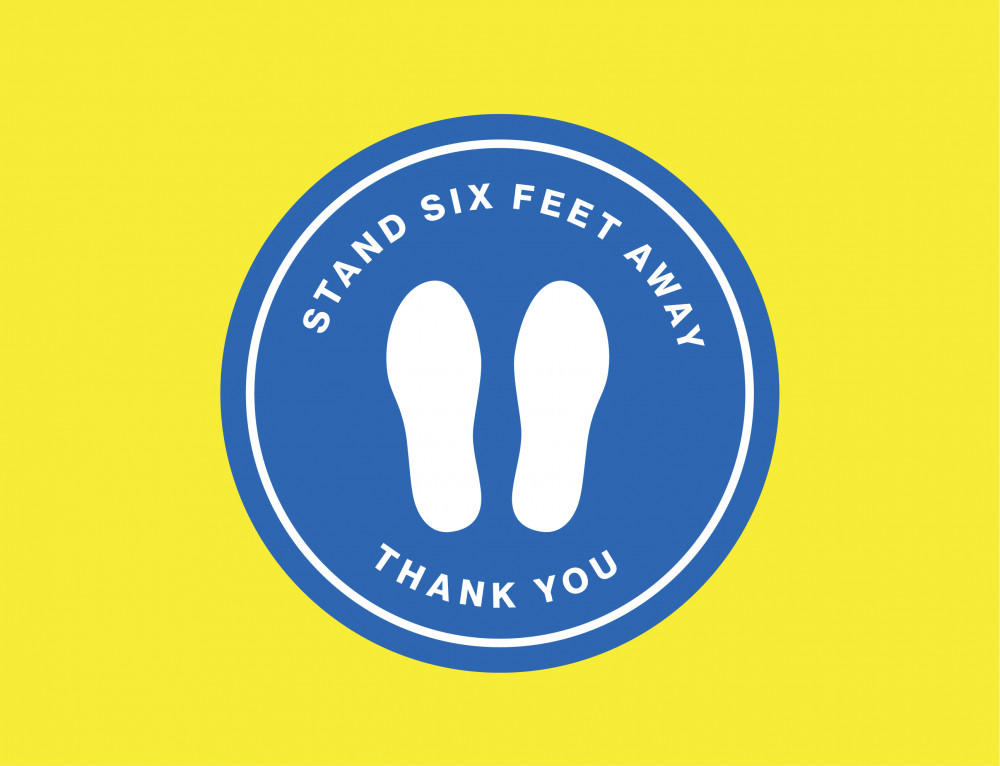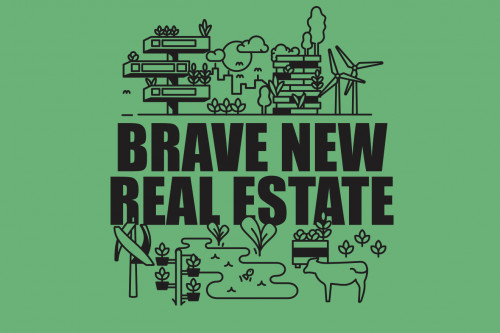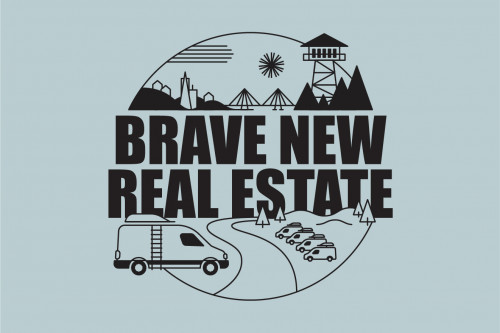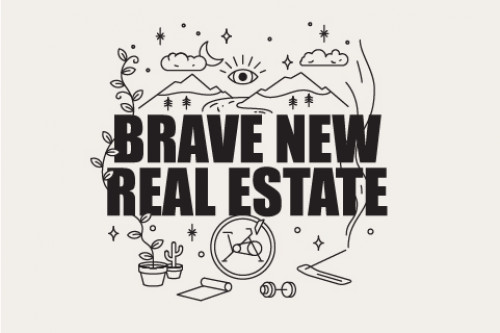Post-Pandemic Real Estate

The nature of work, commuting, and shopping evolved this last month.
While we have been holed away in our homes and typical commerce has quieted down. Many things that have been with us for a while now are getting our fullest attention and use.
Of course, nobody knows with certainty what the world of real estate beyond lockdown really looks like, or how people will behave in a post-pandemic world. But we can recognize that while business has slowed, culture and technology are accelerating.
This post is about looking at those accelerated themes and behaviors that are taking place, and how they might shape the way you staff, run and market your real estate projects and business through this crisis and out the other side.
Even before the pandemic forced us into a giant experiment of working from home, significant corporations and employers were shifting large parts of their workforce to working remotely. Workers were using Slack, Zoom, Skype, and Hangouts to meet, collaborate, and get work done daily.
Now entire countries have learned to work from their bedrooms, juggling deadlines and responsibilities even as family needs become ever more present. Colleagues connect, in many cases, even more, and more effectively. And bosses have learned that out of sight does not mean out of mind.
When this crisis recedes, I suspect many organizations will find that they can be highly efficient - and cost-effective - with distributed teams. They will alter policy and procedure to make remote work more available and, in doing so, recognize that they can tap a global pool of highly skilled workers. Layers of management may disappear along with costly physical offices, while investments in-office perks can be reallocated to salaries or the bottom line. Ditching expensive office space wouldn’t merely reduce emissions, but also free metropolitan workers from ghastly commutes (the daily round trip averages well over an hour in cities such as New York, Chicago, and London).
Of course, this is all assuming you go back to your old office at all, and many won’t have jobs to go back to. Some who are still employed will now permanently work from home, and some employers will choose to downsize their leases or look for flexible office space rather than long-term contracts. Coworking spaces will probably shift from a focus on hot desks and communal spaces to more sanitary private areas. WeWork has already started to outline its strategy for welcoming back workers. These include putting stickers on the floor to encourage people to stand away from each other and designating specific seats within meeting rooms to keep attendees apart.
Many of these adjustments in office design are accelerations of real estate trends that existed well before the pandemic. But just as policies around telehealth and liquor have quickly shifted, the Covid-19 crisis will force swift and permanent changes in both commercial real estate and work culture itself. The office, as we know it, may never be the same.
Over the past year before the pandemic, three critical stakeholder groups had already notified real estate leaders on their duties for contributing to a more sustainable built environment. In his 2020 annual letter to CEOs, BlackRock’s CEO Larry Fink describes climate change as the driver behind “a fundamental reshaping of finance” and “a significant reallocation of capital.” Last year New York City mandated that large buildings (above 25,000 sq ft so not even that large) should reduce emissions by 40% by 2030. Los Angeles’ Green New Deal, also passed in May 2019, requires that all new buildings be net-zero carbon by 2030, with the entire building stock converted to zero-emission technologies by 2050.
Mix this with the now high urgency to reassure consumer confidence that our spaces and places are healthy and safe. Sustainability is not something the real estate industry can ignore. While the stopgaps of free face masks and hand sanitizer may work, for now, customers and users will demand healthier and safer spaces. Some of these required actions are already embedded in the planning and design of mixed-use developments. But many environments and properties will require a complete redesign to help communicate that a building is safe, clean, and interested in your wellbeing. Some of these things may be a more spacious office layout, a greater focus on touch-free technology to reduce the spread of germs, new filtration standards for HVAC, and building materials that are easier to clean. As seen above in the WeWork film – sanitized office spaces will become a selling point.
The US retail industry is currently caught in a ‘perfect storm,’ or convergence of, the COVID-19 health crisis, forced consumer adoption of e-commerce, and a dramatic — and likely sustained — decline in consumer retail spending and consumer wealth. J Crew just filed for bankruptcy, and many well known national chains are lining up behind them.
Initially and until recently, retail was just a distribution channel, the way to get mass-manufactured goods into the hands of customers. Now physical retail is no longer only, or even primarily, about shopping. In this world, a physical shop has to perform as one of the following: an incredible destination (think Kings Cross, London or Design District, Miami), a fulfillment center, or a cheap place for getting everyday needs. And currently, all have to adapt.
Many digitally native direct-to-consumer brands have already driven a fundamental rethink about how physical shops generate value for their brand for some time. These firms started online and looked at retail as more of a ‘Customer Acquisition Cost’: a chance to showcase my wares, explain my brand's unique selling point, and collect a great deal of data about this new customer. U.S. store Bonobos, with its ‘Guideshop’ concept, is one example. Here you book an appointment to be introduced to the whole range, try on items, and order what you will, which is then delivered online, as the store holds no stock other than display. You get a substantial personalized experience while they get to know a great deal about you. With all that data, marketing to you online is cheap and very effective.
It’s unclear whether these models will proliferate and how exactly our high streets will look a few years from now. New technology is changing how we shop, where we shop, and how we want to be served. Now our physical environments will need to be more private, guided, and contactless. We are still social beings, but increasingly only on our terms. If the retail real estate industry wants to thrive, it will need to develop new skills, particularly around technology and data, and use these to work more closely with the best retailers (experience makers) to create places we want to come out of our homes and visit safely.
At some stage, all real estate businesses and brands will have to switch their focus from survival to revival. They will look to rebound, albeit cautiously. And in many cases, they will need to revisit their communications because they cannot only return to ‘business as usual.’ Almost all firms will need to redefine their promise to customers, reevaluate their voice and messaging, and reshape the experiences they deliver.
We’re already telling different stories from a few months ago — stories of isolation, but also new-found connection. Stories of working with our kids in the room, stories of family meals, and new workout regimes. Stories of stress, anxiety, and fear. Stories of hope, optimism, and courage. Which of these stories do we wish to continue telling? And how will we tell them? While embracing new narratives, how will they define the brand experience of our places?
The outlook for the next year will be particularly grim and painful for many. Still, as our past ‘unprecedented’ events have shown, (the great depression, 9/11, great recession) these periods act as a catalyst for accelerating new ways of living.
So while we must cut costs, double down on initiatives or shutter things altogether, I believe there is an opportunity to start thinking about our new reality now and refocus around why we even started a business – to serve and create value for others.
Anthony Slumbers, a consultant and big proponent of Proptech wrote this last year:
‘The key KPI’s of the future will be different, and there will only be four that matter. Flexibility, Productivity, Wellness, and Sustainability. Only invest in assets that score highly against all four.’
This future is now.
Every real estate project or business should be using these four attributes as a checklist with which to evaluate their project planning, design, and communication decisions from now on.


